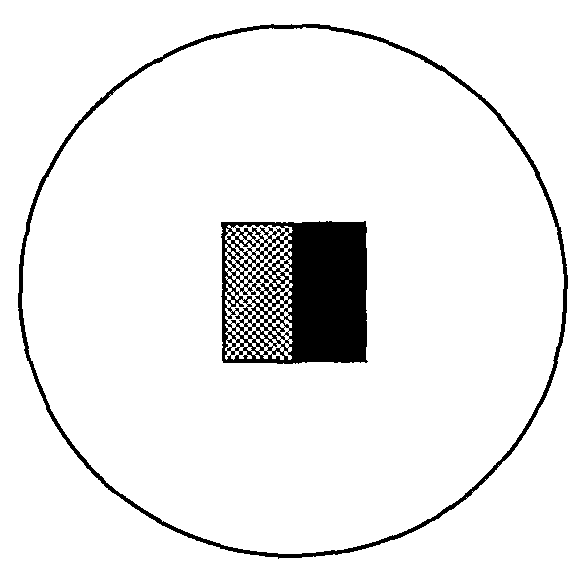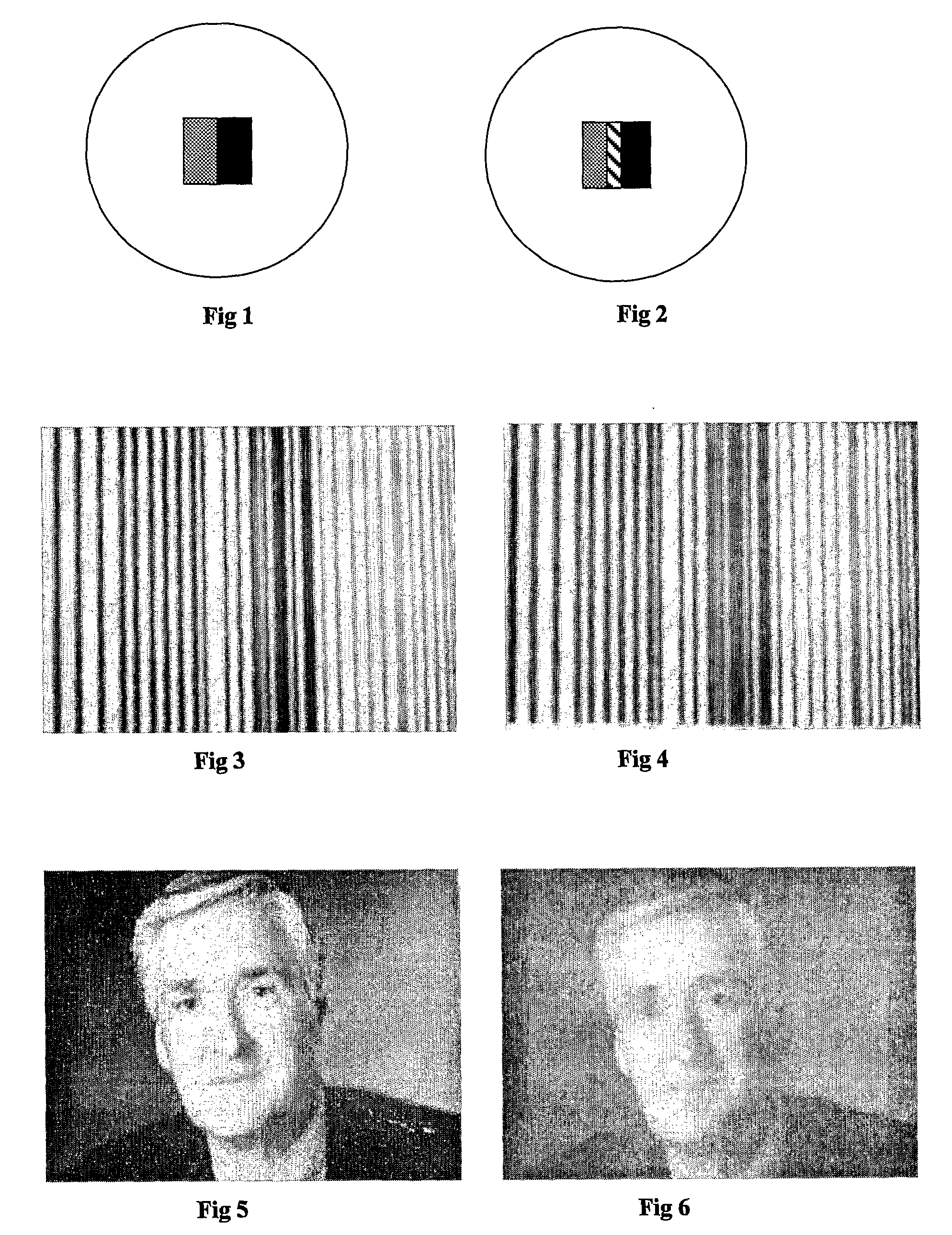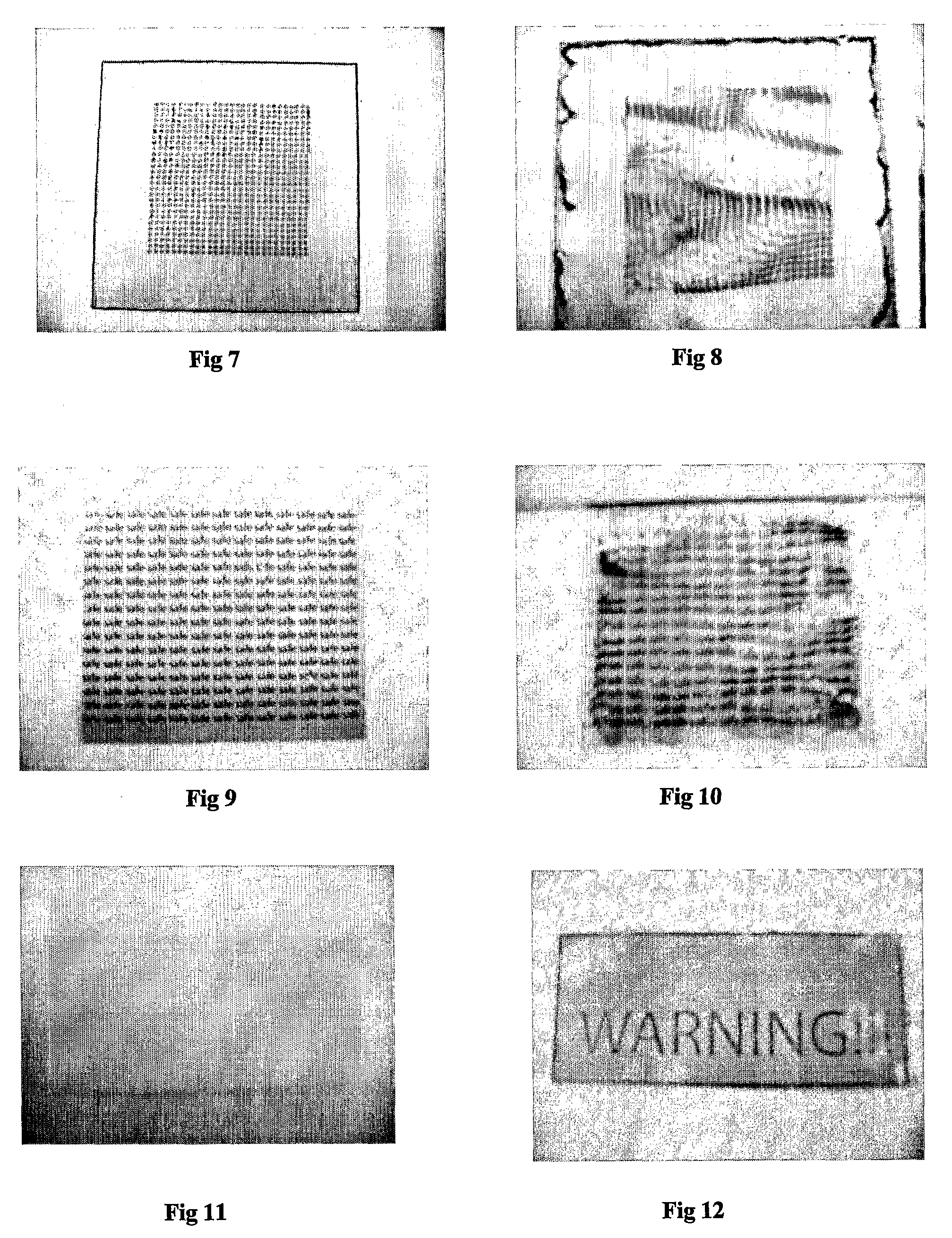Time-temperature indicators
a technology of time-temperature indicators and indicators, applied in the field of temperature indicators, can solve the problems of not providing further information on the thermal history of the product, and the useful life span of products generally is limited and may be significantly shortened
- Summary
- Abstract
- Description
- Claims
- Application Information
AI Technical Summary
Benefits of technology
Problems solved by technology
Method used
Image
Examples
example 1
Wax Compositions
[0065]Wax compositions were prepared and tested by combining solid paraffin wax obtained from Walker Ceramics, Victoria Australia, (product number BA693); liquid paraffin wax obtained from Fluka, (product Number 76233) CAS [8002-72-2] and commercially available candle wax dyes.
[0066]The melting point of the solid paraffin wax was determined to be 58-62° C.
[0067]Mixtures of the waxes and dye were combined and mixed together at a temperature above the melting point of the highest component and allowed to solidify before the approximate melting point was determined. The dye comprised 0.5-1.0 wt % of the mixture. The approximate melting point was determined visually by using an oven and the results are set out in Table 1 below.
TABLE 1Wax compositions and approximate melting pointsWt % solid waxWt % liquid waxMelting point ° C.Notes158531colourless208039colourless257540Blue dye336744Green dye485245Yellow dye505048colourless802053Red Dye
[0068]The above results demonstrated...
example 2
Dye Combinations
[0070]Assorted candle dyes were used to colour the paraffin wax. The colours used were red, yellow and blue. It was observed that the melting point of a wax composition containing 0.5-1.0 wt % candle dye is ˜1-3° C., higher than the wax composition without the dye. It is believed that this merely reflects the higher melting point of the wax base of the dye materials.
[0071]Mixtures of the dyes were added to the wax composition and it was observed that the mixture of coloured dyes could be used to provide a wide range of different colours. Red dye and yellow dye provided an orange coloured wax composition. Likewise, blue dye and red dye gave a purple coloured wax composition and blue and yellow gave green coloured wax composition.
example 3
Visual Thermal History Indicator
[0072]A series of experiments were conducted to investigate the behaviour of the waxes when heated above their melting temperature.
[0073]With reference to FIG. 1, a strip of yellow coloured wax (shown in hash) and blue wax (shown in solid black) were placed in a glass Petrie dish of diameter 60 mm to depth of approximately 1 mm. The side edges of the two wax stripes were contact with each other. A molten colourless wax with a melting point higher than the two coloured waxes was added into the dish and surrounded coloured strips of wax and was allowed to cool and solidify before testing.
[0074]The dish and waxes were heated for one hour in an oven at a temperature above the melting point of the coloured waxes but below the melting point of the colourless wax and then allowed to cool.
[0075]The result of the heating is shown in FIG. 2. It was found that the original coloured waxes had mixed in a region near the area of contact of the two strips. This cent...
PUM
 Login to View More
Login to View More Abstract
Description
Claims
Application Information
 Login to View More
Login to View More - R&D
- Intellectual Property
- Life Sciences
- Materials
- Tech Scout
- Unparalleled Data Quality
- Higher Quality Content
- 60% Fewer Hallucinations
Browse by: Latest US Patents, China's latest patents, Technical Efficacy Thesaurus, Application Domain, Technology Topic, Popular Technical Reports.
© 2025 PatSnap. All rights reserved.Legal|Privacy policy|Modern Slavery Act Transparency Statement|Sitemap|About US| Contact US: help@patsnap.com



